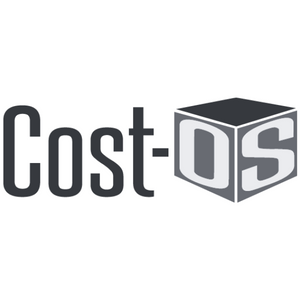Construction KPIs and How the Right Tools Can Help

How do you really measure construction project success? It’s not just about finishing the building—it’s about the path you take to get there. Was your budget spot-on? Was the schedule realistic? Did your team celebrate the final deliverable—or just breathe a sigh of relief that it’s over? The answers aren’t just gut feelings; they’re measurable, trackable, and foundational to how leading teams deliver consistent wins.
Welcome to the world of construction KPIs (or Key Performance Indicators), a toolbox for building smarter from the very first step.
Why Construction KPIs Matter: Setting a Winning Tone
Construction KPIs shine a spotlight on your project’s health—covering cost control, timeline accuracy, safety, and client satisfaction. Gone are the days of running blind; real-time performance data highlights the red flags before they become budget blowouts.
The impact starts before steel hits concrete. In this industry, every “good project” is rooted in a solid preconstruction plan. That’s why the smartest teams set up their KPIs at the earliest planning stages, not just as an end-of-project audit. This proactive approach lets you spot risky estimates, schedule snag points, and missing safety benchmarks while it’s still easy (and cheap) to fix.
One key part of your KPIs is the cost performance index (CPI). When you have a healthy CPI, it means your spending is in check. However, a low CPI is a red flag signaling that your current assets and current liabilities may not be in balance. Pair your CPI with schedule performance, safety incident rates, and client satisfaction and you get a full picture of your project’s health.
Why Preconstruction KPIs Are a Gamechanger
Preconstruction isn’t just paperwork—it sets the baseline for every downstream KPI. Well-run precon teams use tools like DESTINI Estimator to gather historical cost data, automate estimate updates, and benchmark schedules in real time. That means less guesswork and more confident handoffs as the job gets underway.
Take Balfour Beatty. Before rolling out DESTINI Estimator, their precon process was siloed and hard to track. Once they switched, visibility improved for KPIs like cost performance and schedule predictability. Problems were flagged and fixed long before they became emergencies, setting crews up for smoother jobs and happier clients.
Choosing the Right KPIs (and Avoiding the Junk Drawer)
The best project managers don’t track a million metrics. They focus on KPIs that matter:
- Cost Performance Index (CPI): Is your project spending in line with your plan? Catch overruns early by tracking CPI.
- Schedule Performance Index (SPI): Are you meeting critical deadlines? SPI reveals whether you’re ahead or behind—crucial for managing client expectations.
- Safety Incident Rate: Are you keeping crews safe? Low incident rates reflect solid training and safety culture.
- Rework Rate: How much work had to be redone? High rates often signal planning gaps in preconstruction.
- Client Satisfaction Score: How do clients rate your communication, quality, and delivery? This is your ticket to repeat business and referrals.
Don’t drown in data—choose KPIs that drive the most value for your company and project, then make them part of your routine check-ins.
Your KPIs Are Only as Good as Your Tools
In construction, the clock is always ticking. A small delay in one phase can send a ripple effect across the entire project. This is where having access to real-time data isn’t just helpful, it’s essential.
If you can catch a cost variance before it snowballs or spot a scheduling bottleneck before it derails your timeline, you can make adjustments and avoid the problems all together. These are major benefits that are possible when you’re tracking KPIs in real time.
Here’s where modern platforms shine. Gone are the days of manually updating spreadsheets and chasing paper reports. Technology tools offer:
- Integrated dashboards: Tools like Procore, Autodesk, Join, and DESTINI Estimator let you track progress, cost, safety, and quality across every phase.
- Cloud-based collaboration: Real-time updates mean site teams, project managers, and executives all see the same numbers, so delays and overruns are flagged fast.
- AI-powered analytics: Advanced platforms help you forecast costs, spot anomalies, and act before issues snowball.
The industry leaders are always adjusting their KPI dashboards based on new challenges, feedback, and lessons learned—a living process, not a static checklist.
The results speak for themselves regarding the value of preconstruction technology, which also has a set of KPIs that firms use. Take it from a few estimators using DESTINI Estimator on measures they track:
- Cam Delahoussaye, chief estimator with Eleven Western Builders, estimates that their accuracy of cost estimates has improved by 25%; team collaboration has jumped 30%, and errors decreased by 12.5%.
- Ryan Bensinger, director of preconstruction with Keeley Construction, estimates that their accuracy of cost estimates has improved by more than 30%; team collaboration also jumped 30%, and errors decreased by more than 25%.
- Hans Seggelke, estimator with Balfour Beatty, estimates that their accuracy of cost estimates has improved by more than 30% as well; team collaboration improved more than 35%, and errors decreased 20%.
Building a KPI-Driven Culture
Tracking KPIs isn’t just for data analysts or the executive suite—it’s a company-wide mindset. The most successful firms empower everyone to understand, access, and act on performance metrics.
When project managers understand the metrics, they can make smarter choices. When foremen see how their crew’s performance affects the bottom line, they lead with purpose. Executives should utilize KPIs to guide strategy and build resilience into their operations.
Creating this culture doesn’t happen overnight. It takes a lot of training, transparency, and trust, but the payoff is enormous. Teams that embrace KPIs hit their targets and then exceed them.
To build a KPI-driven culture, focus on these three essentials:
- Education and training: Make KPI literacy part of onboarding and regular training.
- Transparency: Share performance data at all levels; clear communication builds buy-in and accountability.
- Actionable insights: Use KPIs to drive decisions—don’t just collect numbers.
Sustained success comes from using KPIs not just to review the past but to shape the future of your company.
The Future: From Data to Decisions
With digital adoption accelerating—including AI, predictive analytics, and cloud-based platforms—the construction landscape is changing. Sustainability, diversity, and long-term innovation are joining cost, schedule, and safety on the list of must-track KPIs. Construction managers are looking beyond cost and schedule to measure impact, innovation, and long-term value.
Beck Technology’s commitment to smart preconstruction ensures that your KPIs aren’t just theoretical—they’re actionable growth drivers. The tools and expertise in the DESTINI Suite help you translate data into strategy, turning every project into a case study for success.
Bottom Line:
KPIs aren’t just numbers—they’re your roadmap to building smarter, safer, and more profitable projects. Start with the right tools, focus on the preconstruction phase, and embrace a culture of accountability. That’s how winning teams build a legacy of excellence.
KPIs are not just numbers. They are your story.

-1.png?width=112&height=112&name=image%20(4)-1.png)














